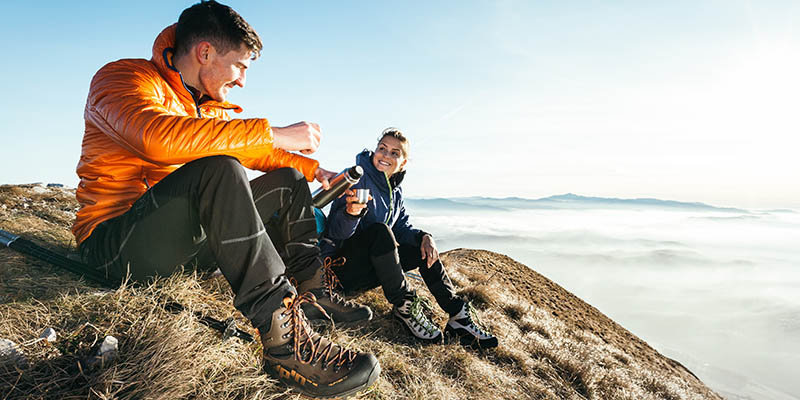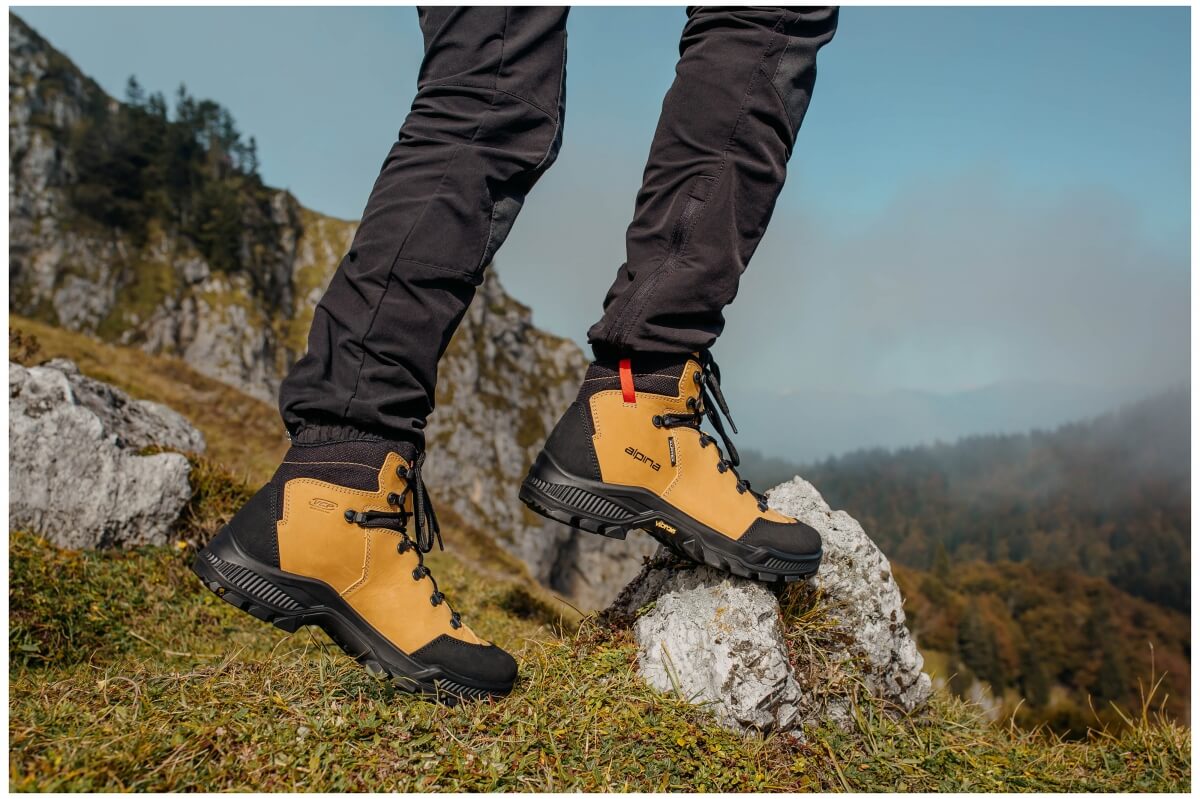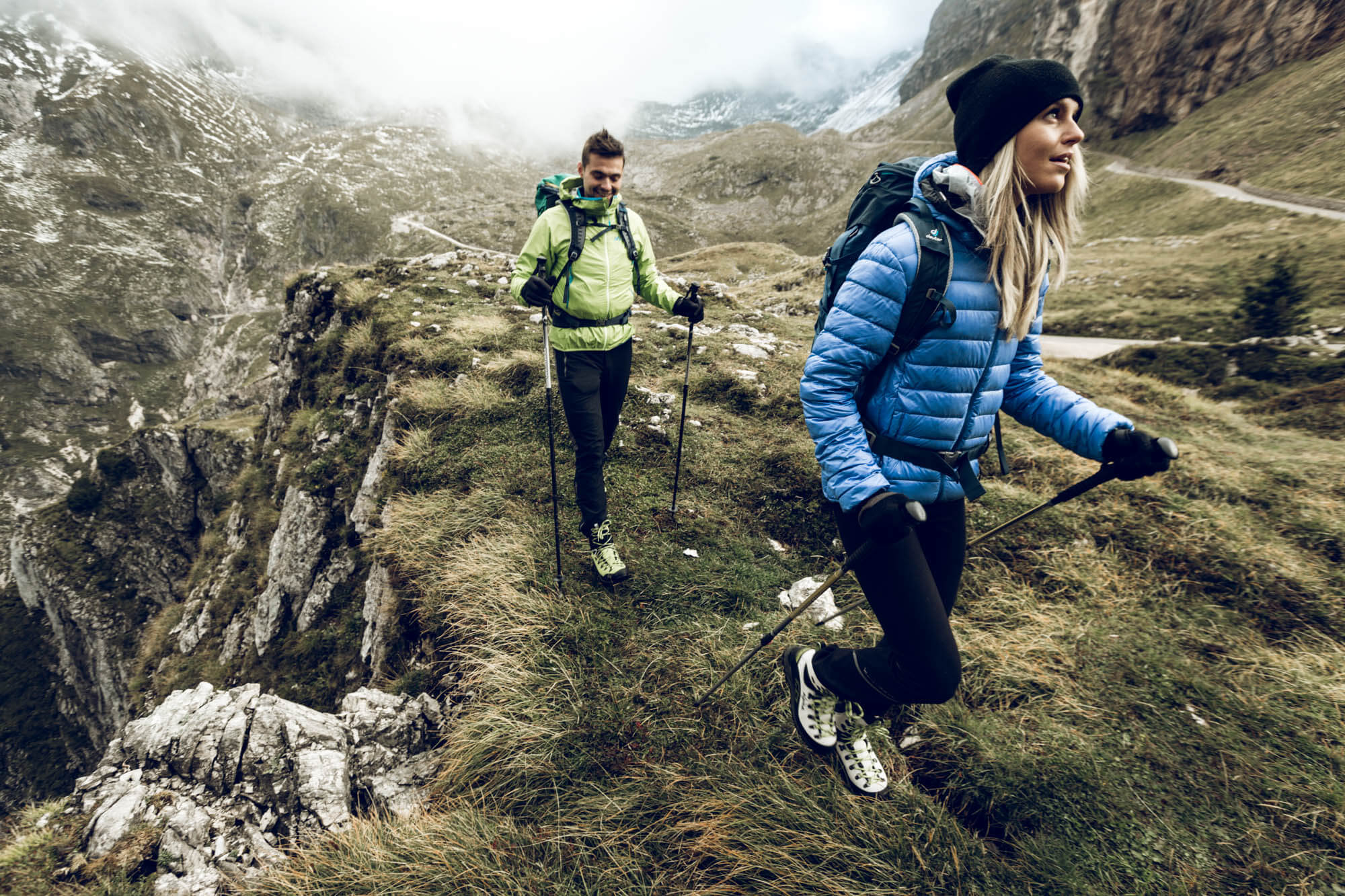How to choose hiking shoes
Probably many of us have experienced at least once the feeling of going to the mountains with the wrong shoes. In such a case, you know what a horrible experience a hike can turn into, followed by cramps, calluses, and heel pain. Hiking boots are probably the most important element to consider when planning your hike. Let's look at some of the basic tips and considerations when choosing hiking boots.
What terrain will you walk?
The first question you need to ask yourself when choosing hiking boots is what terrain you will walk. Depending on the pavement and the difficulty of your route will depend on what choice of shoes to make:
- For easier and smoother hikes on well-trodden paths, it is advisable to stop at a pair of lighter hiking boots, ankle-high. The lightness of the shoes will give you the freedom to run through your route undisturbed and will not burden you unnecessarily;
- Climbing steep paths, as well as rough terrain with the presence of stones and rocks, will require stable hiking boots. This means those with a height above the ankle, heavier, and with a solid base that can compact the resistance on rough terrain;
- The weather conditions are not to be underestimated. When hiking in snow, rain, or even muddy terrain, the waterproof membrane of some models of hiking boots is extremely important. Be sure that the shoes you buy have such a feature;

Basic features when choosing shoes
When it comes to choosing a shoe, the general considerations to be made include:
1. Shoe weight - the lighter the shoe, the less work for your feet. Take as light as possible shoe to keep your feet as stable as possible.
2. Water resistance - look for materials that will allow sweat to come out, but will not allow water to enter. If water enters the shoes, the feeling will be unpleasant, it can cause smelly feet and bacteria. Make sure the shoes you buy have a membrane.
3. Hold your ankles firmly - they should have good ankle protection, be comfortable for your foot and keep your feet stable with a heavier backpack. If the shoe is large or wide, this will lead to more painful hikes.
4. Injury protection - toeing and twisting of the ankle are the two most common problems. Keeping your ankles stable is important, especially on steeper terrain.
5. Hold your feet firmly when carrying a heavy backpack - when carrying a full backpack, shoes should protect your feet from bending so that they do not move too far or back and forth, leaving enough room to move.
We recommend medium hiking boots. They are flexible and can be used for light day trips and long hikes. Also wear a pair of sandals for any longer hikes so you can ventilate your shoes and relax your feet while you walk.
For basic one-day hiking, a standard hiking boot will be a good choice. If you are starting now, the shoe should be a little more comfortable and you can wear it for every day walking. While walking on well-trodden paths, this shoe is a good choice. For the real tourist, the stability in the ankle and the membrane offered by the medium-weight shoes are the most important.

Type of Tourism - think about what terrain you will walk, the length of your hikes, the weather conditions you may encounter, as well as the weight of the backpack you will carry. More stable shoes and stronger shoes are needed for longer hikes with a heavy load. Lighter shoes for paved paths in waterless areas will do the job for you too.
Skill level - it is good for the stability in the ankle to be greater for the new tourist. Tourists who are in better shape with their legs and ankles and are accustomed to muscle strain and a pounding heart can use a lighter shoe, while a new hiker should have healthier shoes as it improves their abilities and strength. your gradually. Think about where you intend to increase your skill level in the future. If you are now starting on easy, well-trodden paths, but plan to walk on difficult terrain later in the summer or next year, then get the right shoes now.
Shoe size - This is the hardest part of choosing any shoe.
Basic tips when choosing a size
Your foot and shoe will fit together over time, so here are some tips that may help:
- Ignore the size of the shoes. If you wear 9, you can go 10 or 8 in a hiking boot. Concentrate on how the shoe fits, whether it fits, not what size it is. When buying hiking boots, wear the right hiking socks with which you will wear the shoes. Comfort is key.
- You need to feel comfortable in your shoes, not tight. There should be no pressure points.
- Try on shoes in the afternoon or evening. Your feet change shape during the day and this will prevent you from buying shoes that seem to fit you. Untie the ties and put your feet in the shoes. While standing, push your foot forward until your toes reach the top of the shoe. There should be enough space to insert your index finger between the heel and the back of the shoe. Check on both feet.
- Move your feet back to the back of the shoe and tie the shoe firmly. Take a walk to see how you feel in your shoes. Your toes should not touch the front of the shoe. If you kick the floor with the toe of the shoe, the front of the ankle and the upper of the shoe should take the blow - the toes should not be bruised from the top of the shoe. If your toes hit, it means that you will constantly push your toes when you go down during hiking and this descent will be painful.
- The heel should not slip into the shoe. Hold the heel of the shoe down with the toe of your other shoe and try to lift your heel. If it moves up and down more than a quarter of an inch, it means that when you go on a trip, you risk getting a nice big callus near the heel. You can try a smaller size or another model with different reinforcement in the ankle.
- Anticipate the possible need to add an extra insole. Remember that hiking boots do not relax in the same way as sneakers, so if you feel any uncomfortable crease or hem, try another pair.

Endurance
When investing in hiking boots, it is important to know that it is worth it. A good pair of shoes can last you for years. Take a good look at the model before you buy it. Inspect the seams and whether all layers are well sewn. Sometimes defects are noticed immediately!
When choosing hiking boots, it is important to consider how much luggage you will carry. If your backpack is heavier and you also carry a tent, you will need stable shoes with a base that does not allow you to lean too far forward or backward. These models also secure the ankles and prevent sprains.
Main characteristics proving quality and durability
- Quality - The seller may try to sell you the most expensive shoe model instead of the best shoe for your needs. You usually pay more for higher quality.
- Here's how you can check if the shoes will last longer:
- Stitches - check for missing stitches, crooked stitches, what they look like.
- Hemming - where the upper and the sole are connected. They should be tight and free of stains, not look weak or loose.
- Thin spots - the thickness of the skin should be the same, no abrasions or uneven edges.
- Protector - thick, strong and hard. Do not be porous and soft and wear out in a few weeks.
- Laces - knitted Nylon, not flat shoelaces. Check the eyelets for strength and durability.
- Smell it - seriously! The shoe should smell like clean, new leather.
Take a look at our offers for women's and men's hiking shoes Alpina.
If you want to check your exact size, measure the foot of your foot in millimeters and click on 'Size Information' to see which size it fits.
Remember the old adage, "You get what you pay for." Yes, hiking boots are an expensive pleasure, but also a necessary investment if you decide to indulge in mountaineering. Avoid the need to buy cheap junk every new season. Research brands and models well. See the opinions of experts. And most importantly, make sure that your shoes are comfortable before you make a purchase!

 EXTREME CHRISTMAS
EXTREME CHRISTMAS